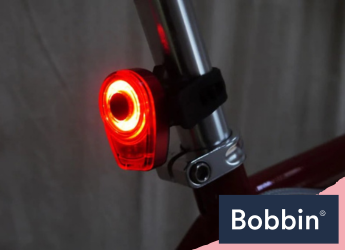Stay Bright: How to Light up Your Bicycle for the Road
Cycling on unlit roads is dangerous, not to mention a bike without a light, which is also illegal. Any bright ideas? Equip your two wheels with a basic lighting system: a headlight and a taillight.
You’re on your own the moment you pedal away. And you can never be too confident on the road when you’re not fully equipped for safety. Thus, it’s worth explaining why you need to fit in and use bicycle lights during night riding in particular.
Night Cycling With Lights On
Are lights really necessary when your bike already has in-built reflectors? Both rear and pedal reflectors are helpful, but they only light up when lit by a vehicle’s headlights. They also don’t provide illumination on the road at all to help you see, so you can’t fully rely on them.
Ultimately, the law requires you to have both for riding on dark roads: lights and reflectors. These attachments help you to be seen by other road users and pedestrians. Most importantly, they give you the peace of mind of knowing you’ll be safe when night cycling.
UK’s Road Vehicles Lighting Regulations (RVLR)
According to RVLR, it’s a legal requirement to have not only a rear reflector but also a front and rear light. All illuminated when riding at night or between sunset and sunrise when cycling on a public road.
As a general rule, white light has to be lit from the front bike and red from the rear, as well as for the front and rear pedals. Yellow pedal reflectors will do, provided that there’s a red rear reflector fitted.
The law also states the situation for lights can’t be higher than 1,500mm from the ground. Helmet-mounted lights are fine as an addition but not in place of your bike lights in any case.
“Flashing lights are permitted”, per Rule 60 of the Highway Code. “But cyclists who are riding in areas without street lighting use a steady front lamp,” to add.
What happens if you get involved in a night crash, and you don’t have your front and rear bike lights ON? This could be regarded as ‘contributory negligence’ — in short, it’s partially your fault. But as long as the front and rear are illuminated, it’s unlikely that you could be ticketed should a cop spot you.
Lighting up Your Bicycle for the Road
Riding a bicycle at night can be a fun and exhilarating experience. But it can also be dangerous if you don’t have the proper lighting. To stay safe and visible on the road, it’s important to light up your bike with the right equipment. Here are some tips on how to do it effectively:
1. Invest in a good set of lights
There’s a range of bike lights available, so find the ones best suited to your needs and budget. But at least one front and one rear light are required. The best features to look out for are: bright, durable, and easy to mount.
A bicycle front light is essential for illuminating the road ahead of you. Showing a white light, it should be positioned centrally or offside. The front lamp must also be 1,500mm from the ground and aligned toward and visible from the front.
A rear light, meanwhile, will make you visible to drivers behind you. Emitting a red light, position it at the centre or the right-hand side of the bike. Ideally, it should be between 350mm and 1,500mm from the ground and visible from behind.
Other lights worth considering are the headlights and taillights. The headlight attaches to the handlebars and often has a small quick-release mount. Tail lights also have handy features, such as a flashing mode and steady mode. Opt for LED models, which are bright enough and also very energy efficient.
Note: The ideal lumen is anywhere between 200 to 600, especially for commuters.
2. Add reflective tape
Reflective tape is an inexpensive and effective way to make your bike more visible at night. You can add it to the frame, wheels, pedals, and other parts of your two wheels. This will create reflective surfaces that will catch the light from car headlights. As a result, you’ll be more visible to drivers from all angles and can help prevent accidents.
For the rear, at least one is needed and in the colour red. Install it centrally or offside, between 250mm and 900mm from the ground. As for the pedal, equip your bike with four reflectors in amber colour. Position it where it can be visible to the front and another to the rear of each pedal.
Note: Experts recommend getting a model with a BS6102/2 mark or similar on the product.
3. Wear reflective clothing

In addition to reflectors, wearing reflective clothing is also a smart move. This can be a reflective vest, jacket, or a reflective band around your wrist or ankle (for clipless pedals). The more reflective surfaces you have on your body, the more visible you’ll be to drivers on the road at night.
If you don’t have such type of clothing, wear bright colours or white instead. This will help you be seen when car lights hit you. You can even add reflective tape so you can be more visible. Cycling gloves also have reflective material, too.
Finally, wear a helmet — always do so regardless of the time of day. But during your night riding, ensure it’s equipped with light or reflective material.
Round-up
Before we conclude this post, here’s a pro tip: charge your lights the day before your night riding. You wouldn’t want to ride home in the dark because the battery went flat.
By following these tips, you can easily light up your bicycle for the road and stay safe while cycling. Always check your lights before heading out and ensure they work properly. With the proper lighting, you can enjoy cycling safely and confidently, day or night.












